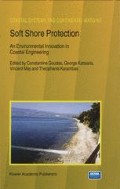Abstract
Multicandidate elections with a single winner suggest several questions about the manner in which the preferences of a group of individual voters are aggregated into a single social choice. Obvious examples are the national presidential primaries in the major political parties. However, nonpolitical exercises such as the ranking of job applicants or college football teams provide other examples. If an individual’s preference is viewed as a ranking of the available choices then the literature on probability models for rankings (see the survey by Critchlow, Fligner and Verducci [11]) may be used to analyze methods for combining preferences. Several probability models are used to analyze the results of a five candidate presidential election of the American Psychological Association. In addition, simulated data generated by parametric probability models is used to consider the merits of a variety of voting systems.
Access this chapter
Tax calculation will be finalised at checkout
Purchases are for personal use only
Preview
Unable to display preview. Download preview PDF.
References
K. J. Arrow. Social choice and individual values, 2nd ed., 1963. New York: John Wiley.
J. J. Bartholdi III, C. A. Tovey, and M. A. Trick. Voting schemes for which it can be difficult to tell who won the election. Social Choice and Welfare 6, 157–165, 1989..
J. C. deBorda. Memoire sur les elections au scrutin. Histoire de l’Academie Royale des Sciences, 1781. Paris.
R. F. Bordley. A pragmatic method for evaluating election schemes through simulation. American Political Science Review 77, 123–141, 1983.
R. A. Bradley and M. E. Terry. Rank analysis of incomplete block designs. I. The method of paired comparisons. Biometrika 39, 324–345, 1952.
S. J. Brams and P. C. Fishburn Approval Voting, 1983. Boston: Birkhauser.
S. J. Brams and J. H. Nagel. Approval voting in practice. to appear in Public Choice, 1990.
J. R. Chamberlin and F. Featherston. Selecting a voting system. The Journal of Politics 48, 347–369, 1986
Marquis de Condorcet (also known as J.A.N. de Caritat). Essai sur l’pplication de l’analyse a la probabilite des decisions rendues a la plurailite des voix, 1785. Paris.
C. Coombs. A theory of data, 1964. New York: John Wiley.
D. E. Critchlow, M. A. Fligner, and J. S. Verducci. Probability models on rankings. Journal of Mathematical Psychology, 35:294–318, 1991.
H. E. Daniels. Rank correlation and population models. J. Roy. Statist. Soc. Ser. B 12, 171–181, 1950.
F. N. David. A note on the evaluation of the multivariate normal integral. Biometrika 40, 458–459, 1953.
P. Diaconis. Group representations in probability and statistics, IMS Lecture Notes, Volume 11, 1988.
P. Diaconis. A generalization of spectral analysis with application to ranked data. Ann. Statist. 17, 949–979, 1989.
A. P. Dempster, N. M. Laird and D. B. Rubin. Maximum likelihood from incomplete data via the EM algorithm. J. Roy. Statist. Soc. Ser. B 39, 1–38 (with discussion), 1977.
C. L. Dodgson. A method of taking votes on more than two issues, 1876. presented in the appendix of The theory of committees and elections, D. Black (1958), University Press, Cambridge.
A. Downs. An economic theory of democracy, 1957. New York: Harper and Row.
B. S. Everitt and D. J. Hand. Finite mixture distributions, 1981. London: Chapman and Hall.
P. C. Fishburn and S. J. Brams. Paradoxes of preferential voting. Mathematics Magazine 56, 207–214, 1983.
M. A. Fligner and J. S. Verducci. Multistage ranking models. Jour. Amer. Statist. Assoc. 83, 892–901, 1988.
J. D. Gibbons. Nonparametric statistical inference, 2nd ed., pg 209, 1985. New York: Marcel Dekker.
T. Hare The election of representatives, parliamentary and municipal: a treatise, 3rd ed., 1865. London: Longman, Roberts and Green.
I.D. Hill. Some aspects of elections — to fill one seat or many. J. Roy. Statist. Soc. Ser. A 151, 243–275 (with discussion), 1988.
M. G. Kendall. Rank correlation methods, 4th ed., 1970. New York: Hafner.
R. D. Luce. Individual choice behavior, 1959. New York: John Wiley.
C. L. Mallows. Non-null ranking models. I. Biometrika 44, 114–130, 1957.
S. Merrill III. A comparison of efficiency of multicandidate electoral systems. American Journal of Political Science 28, 23–48, 1984.
S. Merrill III. Making multicandidate elections more democratic, 1988. Princeton: Princeton University Press.
F. Mosteller. Remarks on the methods of paired comparisons: I. The least squares solution assuming equal standard deviations and equal correlations. II. The effect of an aberrant standard deviation when equal standard deviations and equal correlations are assumed. III. A test of significance for paired comparisons when equal standard deviations and equal correlations are assumed. Psychometrika 16, 3–9, 203–206, 207–218, 1951.
D. W. Rae. The political consequences of election laws, 1971. New Haven: Yale University Press.
H. Stern. Models for distributions on permutations. Jour. Amer. Statist. Assoc. 85, 558–564, 1990.
L. L. Thurstone. A law of comparative judgment. Psychol. Rev. 34, 273–286, 1927.
Author information
Authors and Affiliations
Editor information
Editors and Affiliations
Rights and permissions
Copyright information
© 1993 Springer-Verlag New York, Inc.
About this paper
Cite this paper
Stern, H. (1993). Probability Models on Rankings and the Electoral Process. In: Fligner, M.A., Verducci, J.S. (eds) Probability Models and Statistical Analyses for Ranking Data. Lecture Notes in Statistics, vol 80. Springer, New York, NY. https://doi.org/10.1007/978-1-4612-2738-0_10
Download citation
DOI: https://doi.org/10.1007/978-1-4612-2738-0_10
Publisher Name: Springer, New York, NY
Print ISBN: 978-0-387-97920-5
Online ISBN: 978-1-4612-2738-0
eBook Packages: Springer Book Archive

